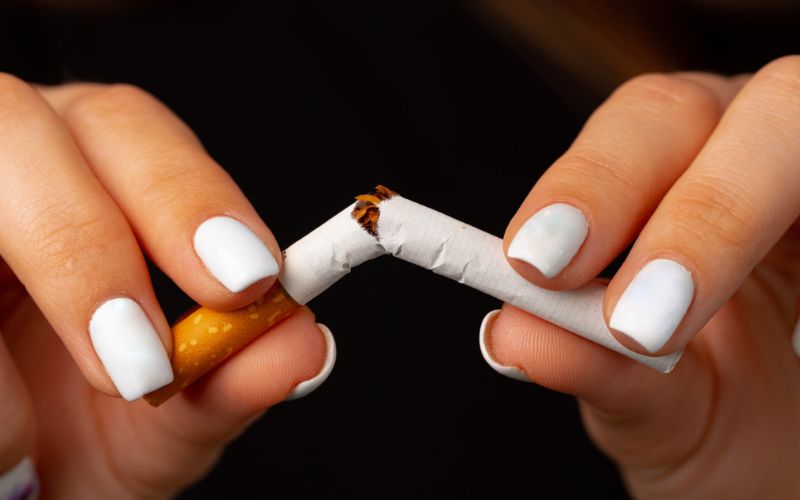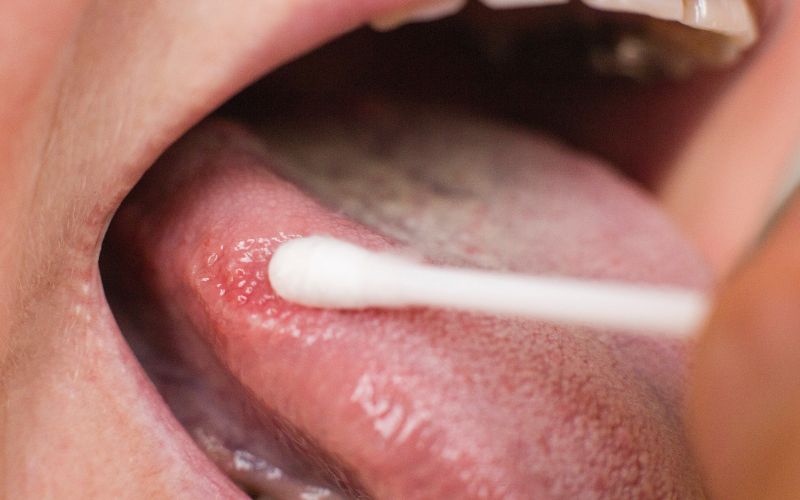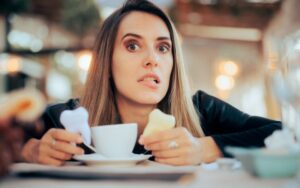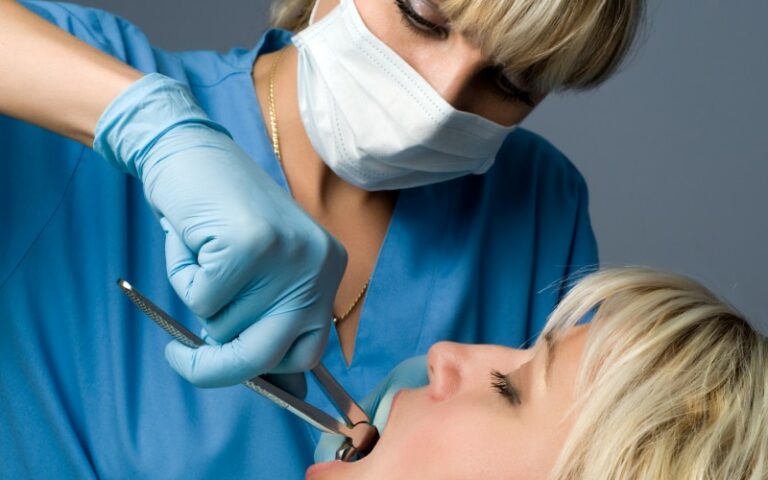No one wants to spend time thinking about oral cancer. However, with more than 4,400 Canadians estimated to be diagnosed this year, educating yourself on prevention methods, early detection, and treatment options is more important than ever.
While the number of people expected to be diagnosed with oral and throat cancers is concerning, the good news is that ensuring early detection is as easy as attending your routine dental exams every six months. What you may not realize is that oral cancer screening is part of your regular exam. A dentist or dental hygienist can see and feel precancerous tissue changes and early cancer, and can diagnose them during the curable stages. When oral cancer is detected early, the survival rate is an encouraging 80% to 90%.
Due to the rapidly growing number of HPV-related oral cancer diagnoses, people 18 years and older should get screened yearly.
Table of Contents
ToggleWhat Is an Oral Cancer Screening?
An oral cancer screening takes only three minutes. It consists of a verbal, visual, and physical examination and includes the following:
- A thorough review of your oral health history, as well as your overall health history, which includes questions that help assess your level of risk for mouth cancer
- A visual inspection of all the areas of your mouth and throat in an effort to locate any abnormalities, such as sores and red or white patches; this inspection includes the lips, cheeks, gums, tongue, floor of the mouth, roof of the mouth, and far-back section of your tongue. See the image below for an 8-step guide to a home oral cancer screening.
Oral Cancer Signs and Symptoms
In between routine dental exams, you should perform self-examinations, and be sure to keep an eye out for the following signs and symptoms that may indicate the presence of oral cancer:
- Red or white patches on the lining of the mouth or tongue
- Swelling or thickening of areas inside the mouth
- Unexplained bleeding
- Sores on the face, neck, or mouth that do not heal (do not heal within 2 weeks)
- Chronic sore throat
- Hoarseness
- A change in the way your dentures fit
- Suspicious lumps found by palpating your mouth, jaw, and neck
- Dramatic weight loss
Oral Cancer Prevention Tips

While oral cancer is prevalent, there are measures you can take to minimize your risk.
- Avoid smoking and the use of all tobacco products.
- Limit or refrain from drinking alcohol.
- Avoid overexposure to the sun, and use sunblock on your skin and lips.
- Practice safe sex.
- Maintain a healthy diet.
So you just completed an at-home oral cancer exam, but you would like some additional reassurance. No problem! Next time you’re in to see us – ask about our VELscope oral cancer screening.
No matter your age, dental condition, and if you have a million questions, Dr. Sims can assist you or your young children in a professional manner and loves answering any of your questions or concerns. Dr. Sims grew up in Grimsby playing basketball, so he’s always up for talking about the Raptors! He’s also a football fan - go Buffalo Bills! In his free time, if he’s not watching a basketball game or football game, you’ll likely find him working out, cooking (got any new recipe ideas?), and of course, spending time with his amazing family.
- Tongue Tie Surgery: Medical or Dental? Your Complete Guide - February 28, 2024
- What to Eat After Tooth Extraction - January 16, 2024
- What Medical Professionals Treat Tongue Tie? - January 5, 2024











